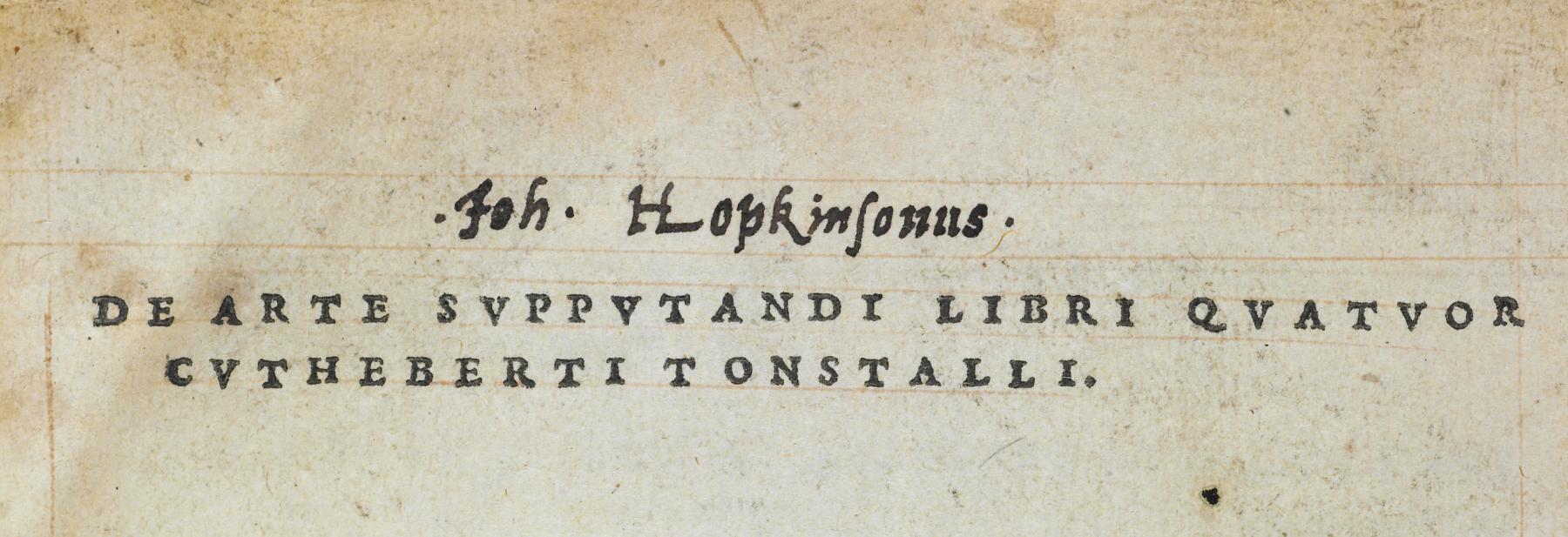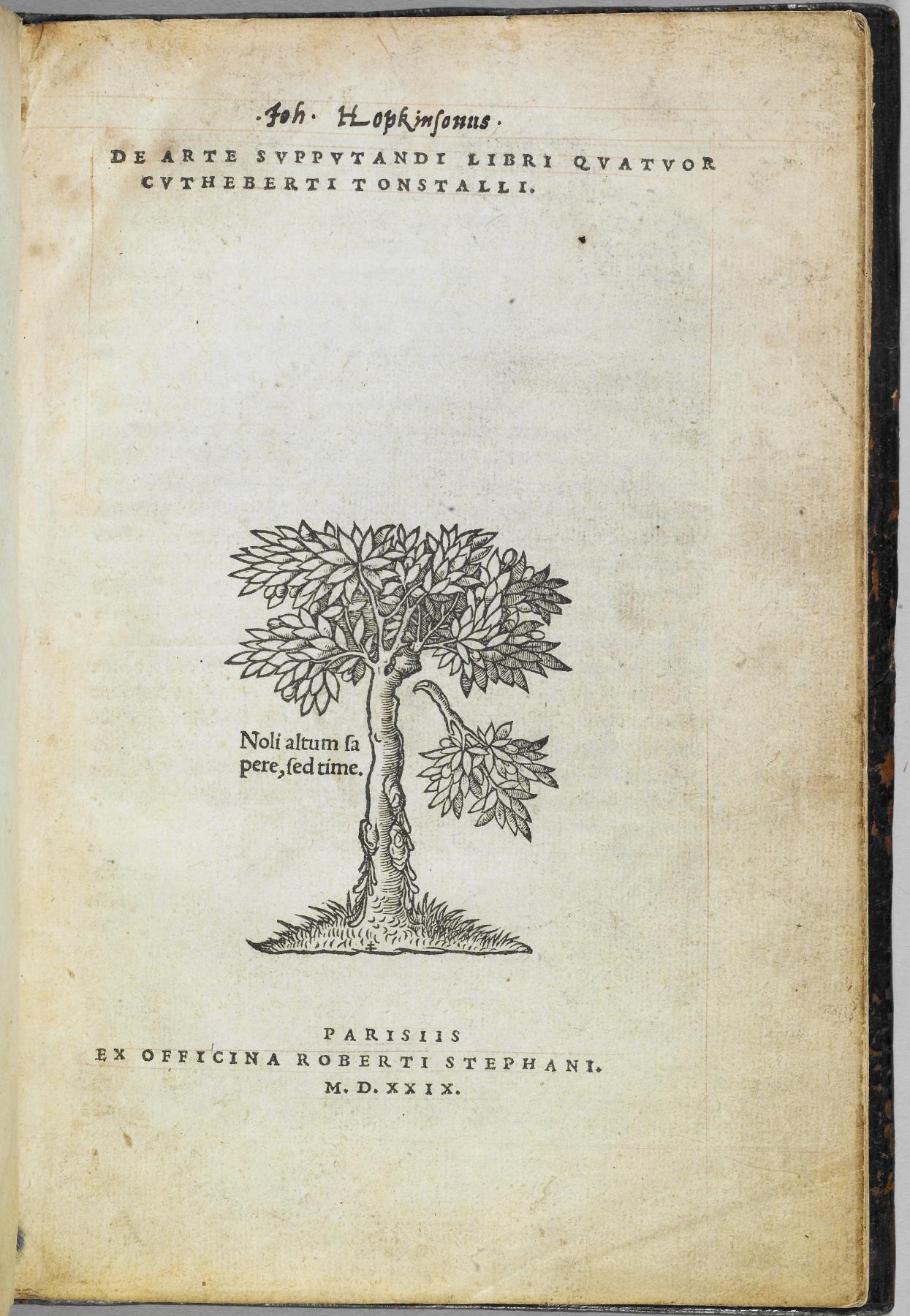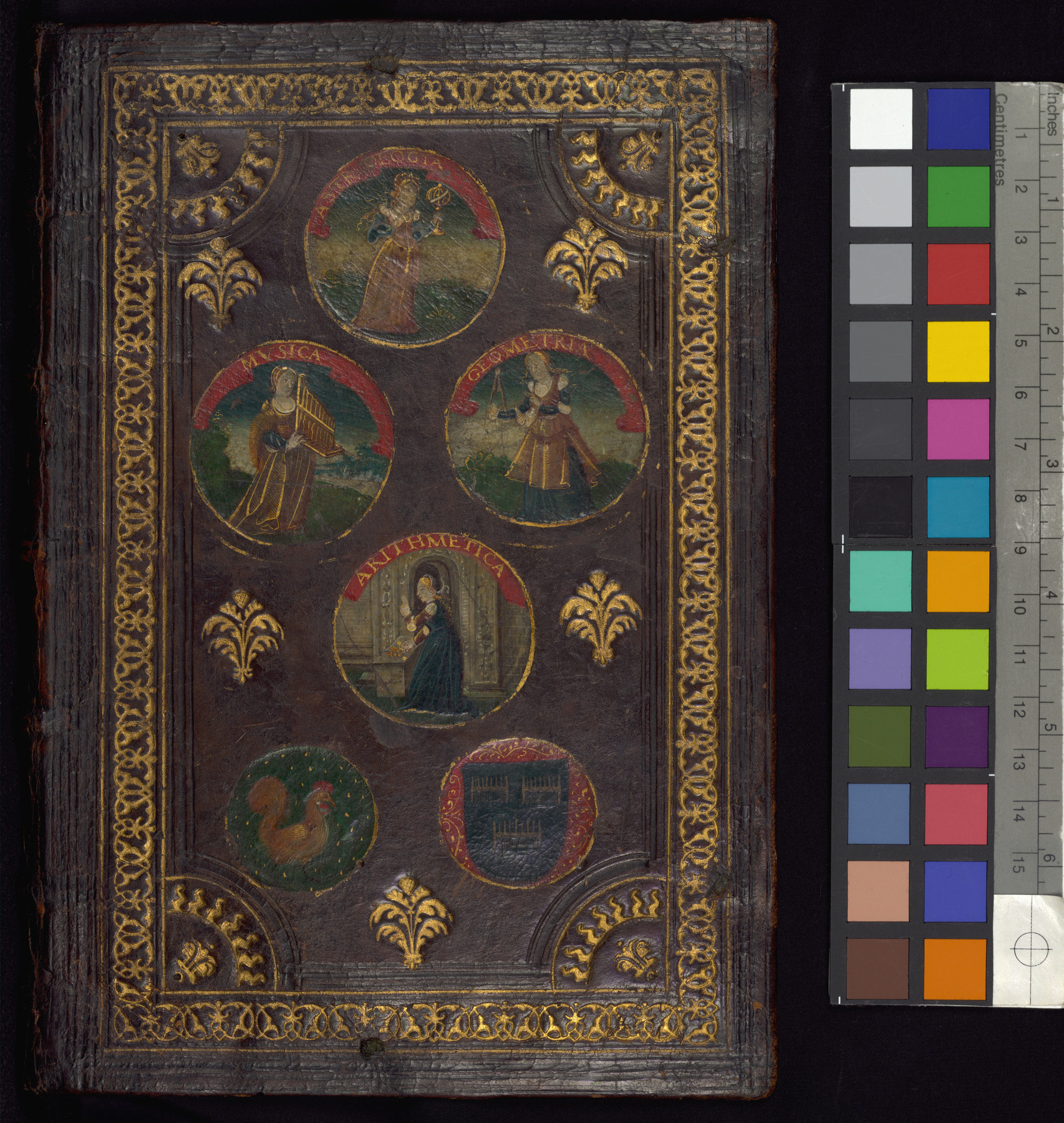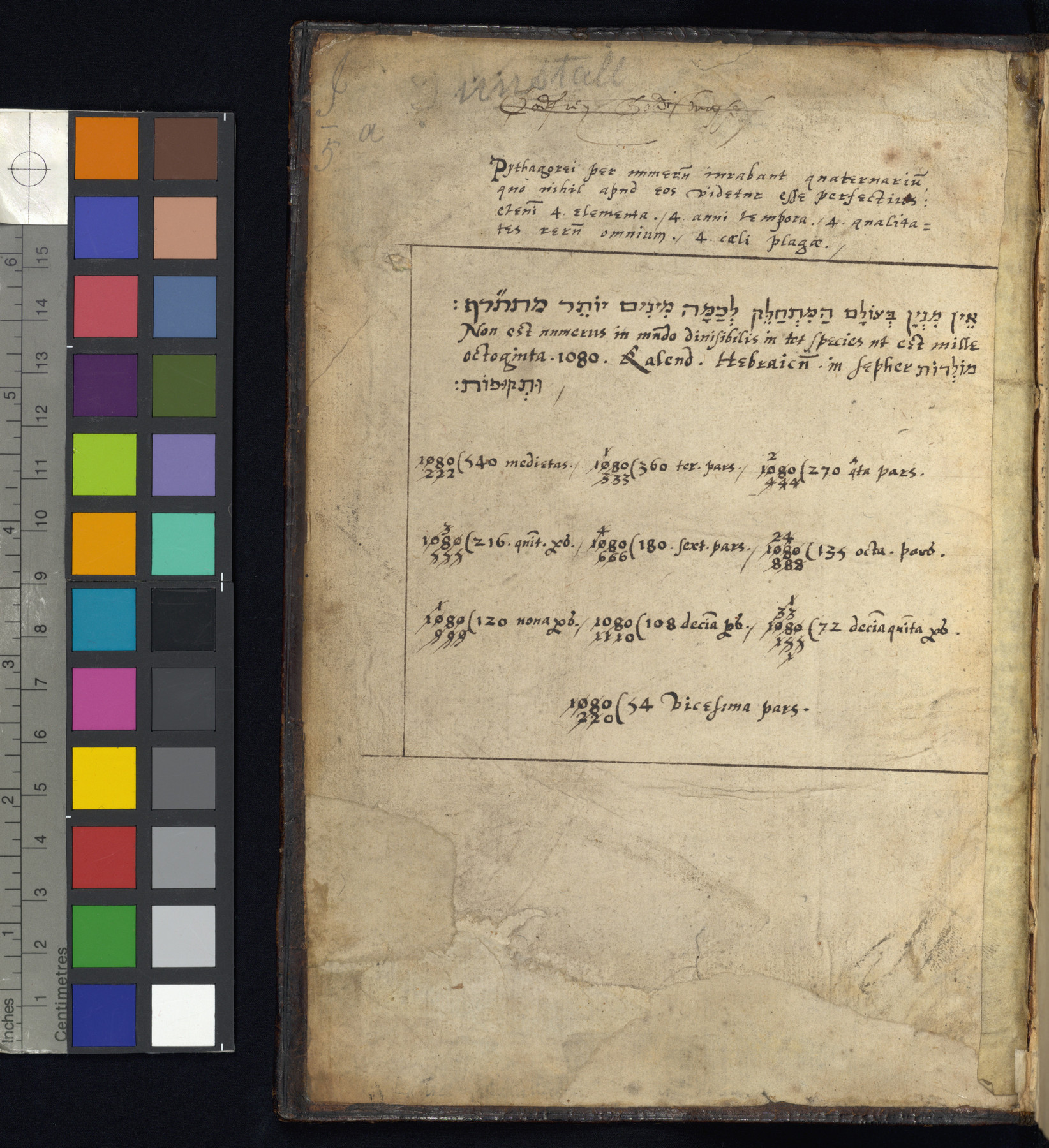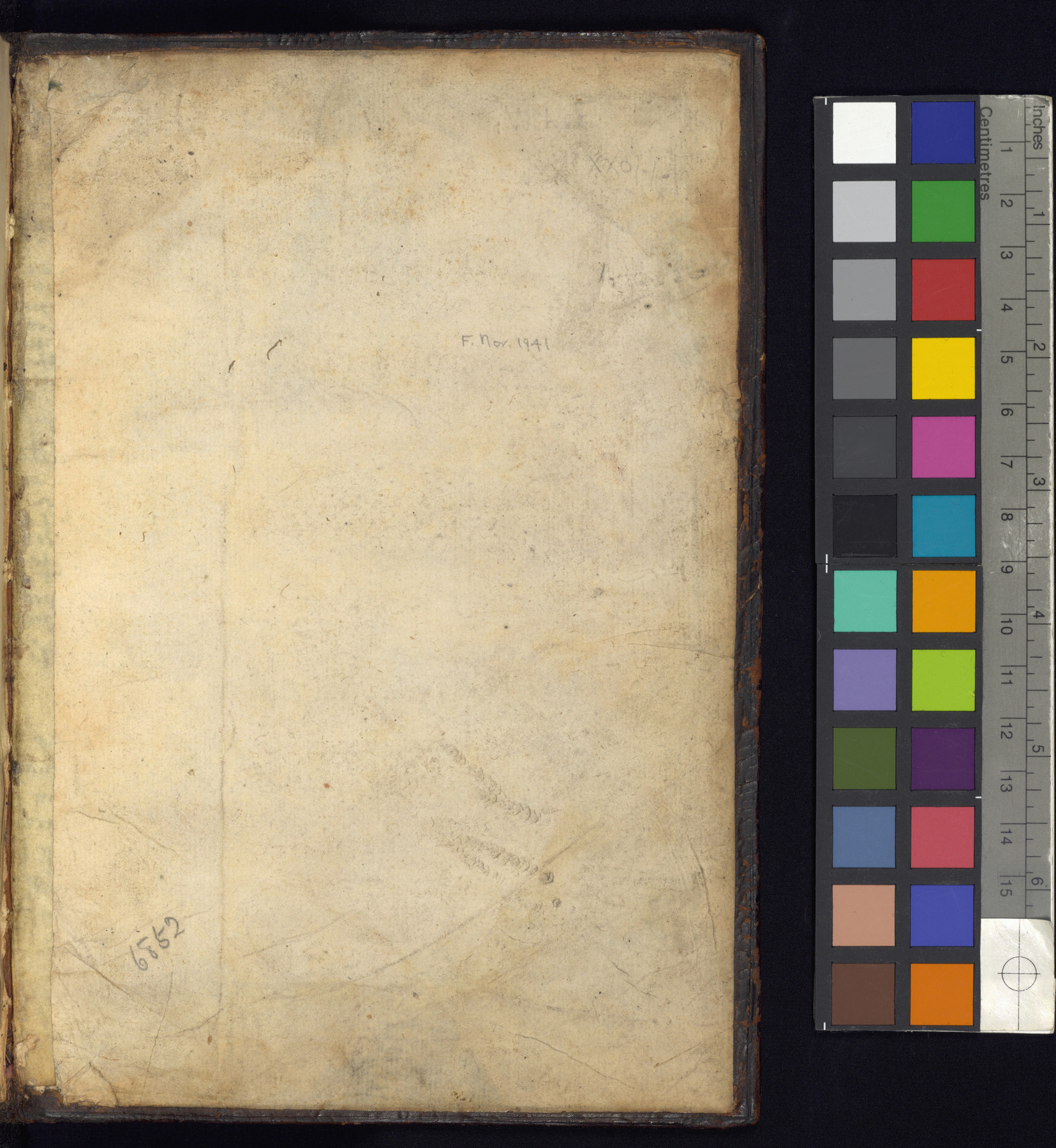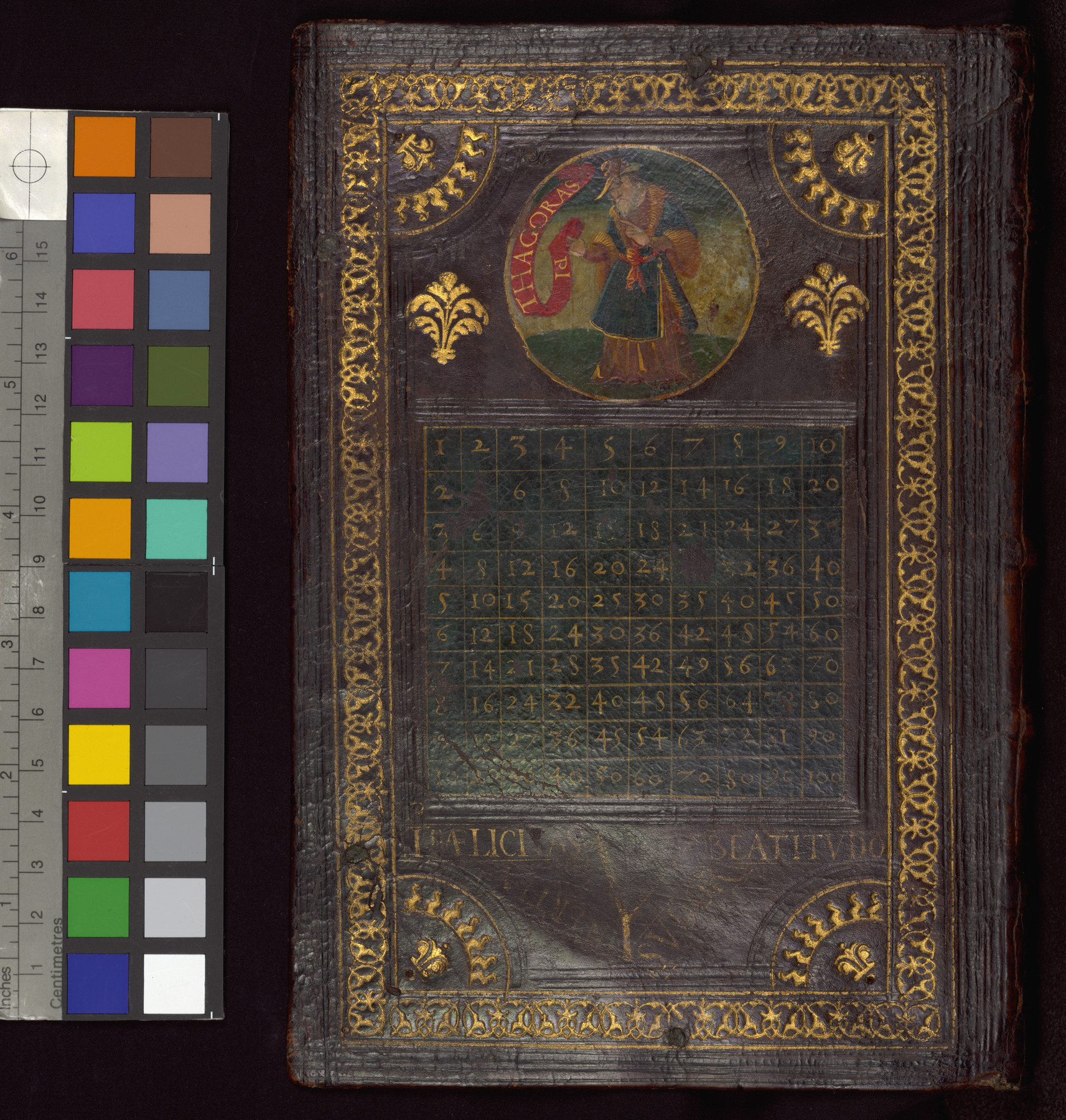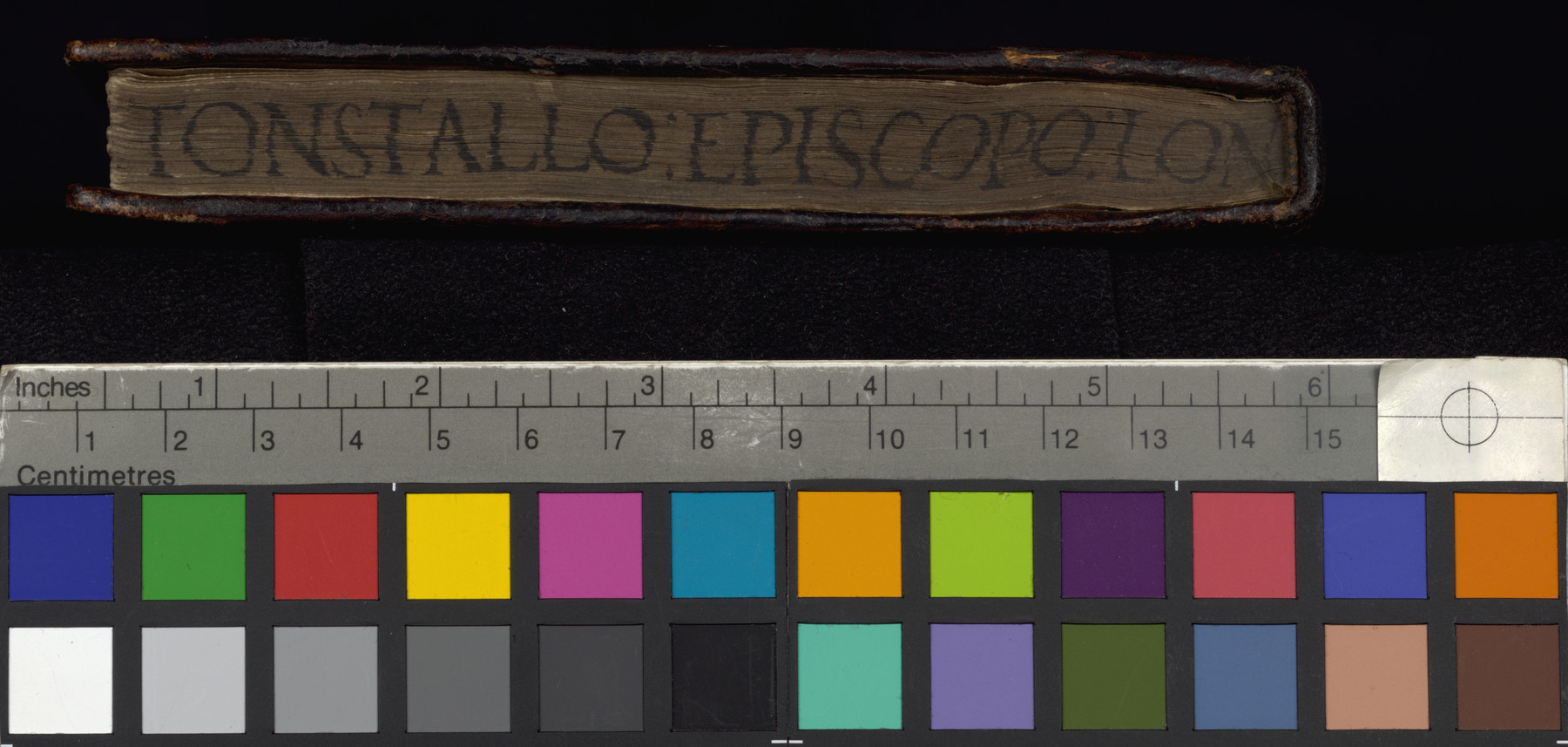De arte supputandi libri quatuor Cuthberti Tonstalli.
271, [9] p.; Brown calf over pasteboard gold tooled with small tools based upon Italian models: a border using a circular arabesque tool, corner quadrants with radiating flames, as on north Italian bindings, and two fleurons also very Italian in character. Painted on the upper cover are four circular medallions with female personifications of the four Mathmatical arts: Astrology, Music, Geometry and Arithmetic; while on the lower cover an old man bearing a scroll inscribed PITAGORAS is painted in a circle above a computation table and an angular banderole labelled: I[N]FAELICITAS/INERTIA/SVDOR/BEATITVDO. "Inertia: unhappiness; labor: blessedness."... See exhibition catalog The History of Bookbinding for full (and far longer) descrption. Note in Dorothy Miner's hand on recto first fly leaf, "Painted and gilded binding ca. 1529. Arms of Cuthbert Tunstall as Bishop of London (1522-30). One of the ery eariest English gold-tooled bindings, cf. Hobson, Bindings in Cambridge Libraries, 67. Related to bindings from King Henry VIII's Bindery. Repeats 2 tools on Henry's Epistola which also had ?? ties and general italian infl[uence]." Housed in maroon library buckram box.; First published: Londini : Impress. in aedibus R. Pynsoni, 1522. -- "Appendix ex Budaei libro De asse excerpta": p. 264-[272] -- "Gulielmi Budaei ... Breuiarium de asse": p. [273-278]
Inscription
Geographies
France, Paris (Place of Origin)
Measurements
Closed H: 8 1/4 × W: 5 3/4 × D: 7/8 in. (21 × 14.6 × 2.3 cm).
Location in Museum
Not on view
Accession Number
In libraries, galleries, museums, and archives, an accession number is a unique identifier assigned to each object in the collection.
In libraries, galleries, museums, and archives, an accession number is a unique identifier assigned to each object in the collection.
92.567

